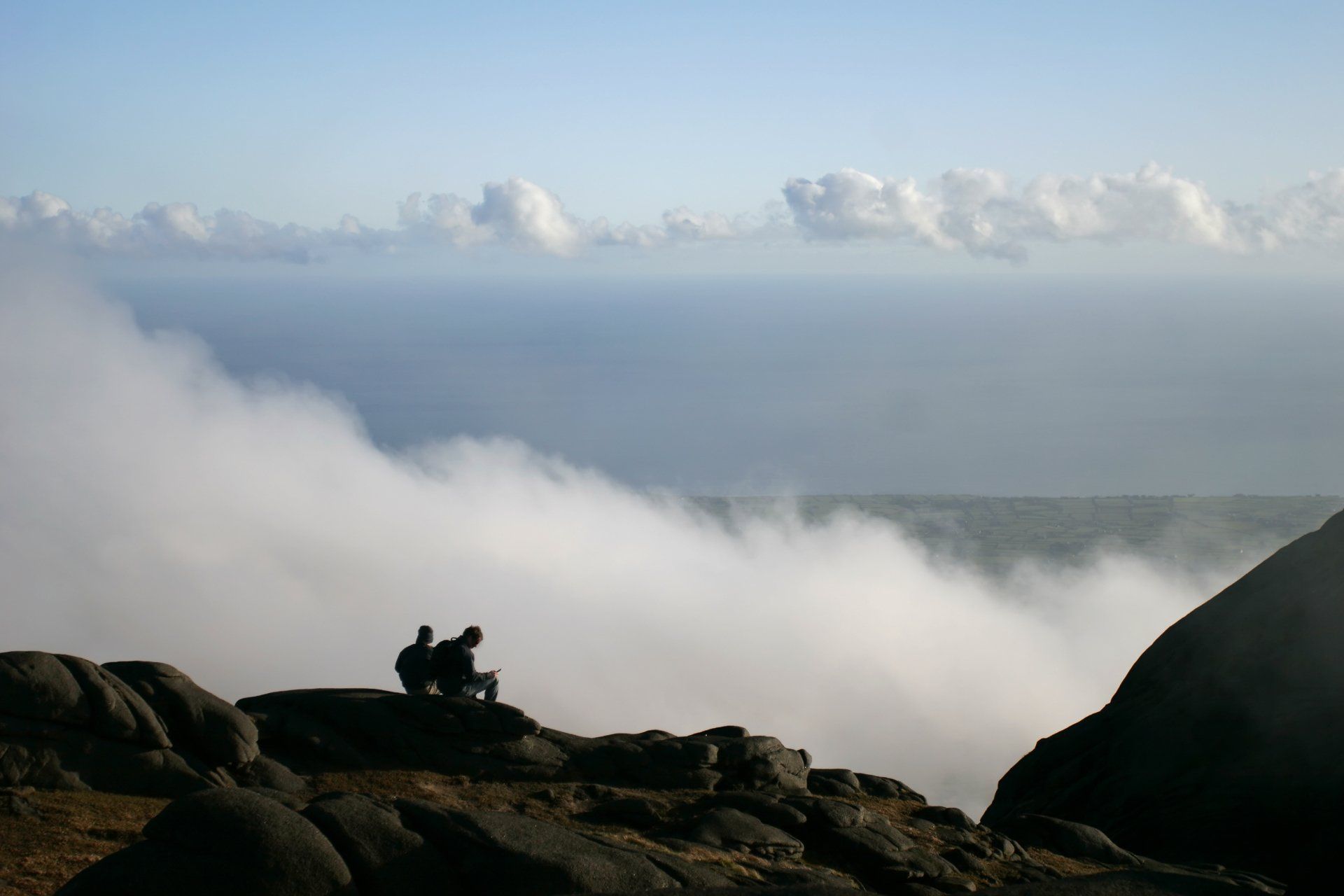Advanced Layering By Philip Werner
Advanced Layering: Temperature Regulation Hacks for Cold Weather and Winter Hiking

You can roll up your sleeves to vent access heat on cold weather hikes without removing an entire layer. By doing this, you’re cooling off the blood that passes close to the skin in your wrist.
Layering for cold weather and winter hiking is a lot more nuanced than people make it out to be. While assembling a wicking base layer, insulating mid-layer, and waterproof/windproof shell is the foundation for a layered clothing system, experienced hikers employ a number of temperature regulation techniques beyond adding or removing their shell or mid-layer to avoid sweating or getting cold as their level of activity changes during a hike or snowshoeing trip.
The Function of Clothing
Your cold weather clothing layers are designed to trap heat and keep it close to your body so you can stay warm. But they can also trap too much heat and cause you to perspire when your activity level increases, say when you are climbing a steep hill. While you can conceivably remove a layer to prevent overheating, there’s a good chance that removing your shell or mid-layer insulation will release too much heat and you’ll get too cold.
Release Some Heat
The trick to fine tuning your temperature regulation is to release some of the heat without removing an entire layer. Opening the center zipper or pit zips on your hard shell jacket (if it has them) or unzipping the chest zipper on your mid-layer fleece pullover, or unzipping the side zippers on rain pants (if they have them) are good ways to shed extra heat without removing an entire garment.
Some other tricks hikers use are to:
- Push up the sleeves of your mid-layer or baselayer to shed heat from your wrists where the arteries pass close to the skin
- Remove your gloves or switch to a lighter weight pair
- Roll your fleece beanie up over your ears to vent more heat
- Switch to a lighter weight hat or a thin buff
- If there’s no snow (to make your pants wet), take off your gaiters to vent more heat from your lower legs
- Open the side venting zippers on your pants, if they have them

I was cold so I put a buff on to insulate my neck and gloves with wrist gauntlets. Again, insulating the areas where your blood flows close to your skin pays big dividends in staying warm.
Trap More heat
If you’re too cold, you can always put on a warmer hat and warmer gloves, pull the hood of your rain shell over your hat and close all of its zippers. Some other tricks include:
- Cover your neck with a Buff to better insulate the blood flowing close to your skin in your neck. Insulated buffs can be overkill, but they do warm you up fast!
- Put on a pair of gloves with wrist gauntlets and cinch them closed
- Close the wrist cuffs of your rain shell (if it has them)
- Put on gaiters to better insulate your lower legs

Mid-layers and baselayers with chest zippers provide an excellent way to vent heat
Leg Insulation
Most of the advanced layering techniques I’ve illustrated so far involve your torso or extremities. What about layering for the legs?
Truth is, you need less insulation for your legs when you’re hiking in cold weather. They are the biggest muscles in your body and they generate a lot of heat. That said, everyone’s physiology and the weather they hike in are likely to be different. But before you assume that you need to wear long underwear for cold weather or winter hiking, try hiking without them, using just your regular hiking underwear, gaiters, and pants for insulation.
It’s easier to add layers than take them off, and overheating and sweating profusely because you started off with too any layers is best avoided. Whenever you start a cold weather hike, you want to try to start ‘cold’ and add layers as needed after your body and core temperature heat up from exertion.
Clothing and Accessory Selection
When you go to buy the components that make up your own cold weather or winter layering system, you want to select garments and accessories (hats and gloves) that give you a lot of different combinations that you can mix and match as circumstances warrant.
Here’s a large list of clothing options to consider, listed by layer. The trick is to give yourself a lot of different options for the more nuanced temperature regulation I describe above by choosing a collection of clothes that give you may different venting or warming up options. Cold weather can be very dynamic, so you want a lot of flexibility in the layers you bring.
- Base layer (top)
- Warmth level (usually as a function of thickness)
- Long sleeve or short sleeve
- Chest zipper (1/4 or 1/2 length)
- Hooded to cover neck
- Thumb-loops to cover wrists
- Base Layer (bottom)
- Warmth level (usually as a function of thickness)
- Leg length (briefs, boxer, thigh length, full leg)
- Mid-Layer (top)
- Warmth level (usually as a function of thickness)
- Long sleeve or vest
- Chest zipper (1/4 or 1/2 length)
- Full length jacket zipper
- Hooded to cover neck
- Chest pocket zipper
- Thumb-loops to cover wrists
- Mid-layer (bottom, as in pants)
- Warmth level (usually as a function of thickness)
- Side zips (full or partial)
- Wind proofing (for example, ski pants often have a hard side and a soft breathable side)
- Shell Layer (top)
- Warmth level (usually as a function of thickness)
- Side Torso zips (ex: Outdoor Research Foray Jacket)
- Pit zips
- Velcro wrist cuffs
- Hood
- Side pulls
- Zipper height (covers neck completely or just chest)
- Rear volume adjustment
- Brim (to block wind)
- Shell Layer (bottom)
- Warmth level (usually as a function of thickness)
- Side zips (full or partial)
- Hats
- Warmth level (usually as a function of thickness)
- Neck Insulation
- Warmth level (usually as a function of thickness)
- Integrated Face mask
- Gloves
- Warmth level (usually as a function of thickness)
- Wrist cuffs or not
- Breathability
- Waterproof or not
- Gaiters
- Warmth level (usually as a function of thickness)
- Height

I don’t wear long underwear in winter unless it’s very cold (sub-zero). My legs generate so much heat, that wearing calf length boxers and high gaiters is the only extra insulation I need.
Real World Example
If you’ve been overwhelmed by the possibilities listed above, here’s an example of what I carry for cold weather hiking during New England’s shoulder seasons in early spring and autumn when temperatures range from 10 degrees up to 40 degrees. When it starts to snow, I keep wearing the same gear except for my pants, which I switch out for slightly warmer softshells.
- Shell (top):
- Mid-layer (top)
- Baselayer (top)
- Midweight: Patagonia Capilene Lightweight Jersey (formerly called Capilene 2)
- OR
- Lightweight: Super.Natural Jersey
- Shell (bottom): (only wear these during precipitation or high wind)
- Mid-layer (bottom)
- Railriders Weather Pants (no longer made)
- Base-layer (bottom)
- Gloves (I bring all of these)
- Heavyweight/waterproof: Sealskinz Extreme Cold Weather Gloves
- Midweight/breathable: Marmot Glide Softshell Gloves
- Lightweight/warm: EMS Fleece Gloves
- Hats (I bring all of these)
- Heavyweight: Mountain Hardware Dome Perignon Hat
- Midweight: Mountain Hardware Micro Dome
- Lightweight: Lightweight Buff
- Neck Insulation:
- Gaiters
- Outdoor Research Crocodile Gaiters (knee height)
Wrap Up
Cold weather layering is much more nuanced than taking a layer off when you start to sweat or putting one back on when you get cold, requiring all kinds of different micro-adjustments to maintain your comfort. When choosing your core layers and accessories, in addition to hats, gloves, and neck insulation, you want to make sure that you build in a lot of different venting and layering options that let you fine tune your layers without having to stop and readjust your clothes each time. Learning how to stay warm and dry in cold weather takes practice, but it’s an important skill to learn if you plan to do a lot of cold weather or winter hiking.


